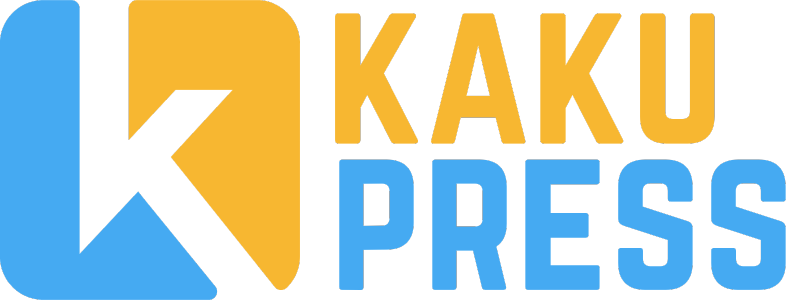With content teams operating in ever more digitized environments having to do so much more on a daily basis and maintaining similarly high quality, consistency and personalization levels it has never been more important to adopt effective workflows. Yet many companies still use outdated routing systems that confuse productivity, anger approval streams and generate unnecessary manual, repetitive actions. But modular content can relieve editorial backlogs. By creating content in structured, reusable chunks also known as modular content companies can better facilitate the creation process, teamwork and faster publishing without sacrificing brand identity or editorial control.
What is Modular Content Design?
Modular content design is the creation of individual, discrete blocks of content headlines, images, product descriptions, testimonials, call to action, etc. that can be managed and reused independently. These blocks can be plugged into any layout, but they aren’t confined to one page or one channel; they can exist in web, mobile, email, or app. Therefore, in this regard, modular content facilitates the editorial mindset of moving away from a finished page to finding content pieces that create a larger whole while empowering everyone on the team to generate and edit experiences faster. A scalable headless CMS supports this modular approach, enabling content to become more agile, easier to maintain, and ready to grow across platforms without rework.
Where Do Editorial Bottlenecks Come from?
Many editorial bottlenecks stem from established, linear workflows, siloed teams and content structures that necessitate duplication efforts. For instance, when a brand has a new campaign launch, the editors often have to recreate those exact pages from scratch or copy/paste content from one system to another. They wait for the web team’s design efforts or app department’s backend development. These additional time constraints create longer turnaround times and reduced flexibility. Modular content helps avoid this issue because it fosters parallel work streams where writers, designers and marketers can work on their respective blocks simultaneously without stepping on one another’s toes. This decreases the need for back and forth handoffs and creates an integrated approach to faster content creation.
How Does Reusability Speed up Approval Workflows?
Content approval workflows are one of the biggest headaches for editorial teams. When a page or campaign is created as an evergreen one-off, that means every asset goes through its separate route of approval for content accuracy, branding and compliance. With a modular approach and already-approved blocks that can be reused among multiple campaigns/launches, there is no need to approve the same block over and over. Legal only has to approve the legal disclaimer block once. Marketing can use their promo headers as often as they’re deemed effective. This more trusting approach encourages a modular mentality that increases speed to approval since teams would rather spend time creating new content than constantly re-validating blocks they’ve already signed off on.
Helping Teams Experiment and Iterate Faster
When content needs to be dynamic, testing and iterating on the go is a must. With modular content, editorial teams can swap out, rearrange and adjust elements as needed without having to reconstruct an entire page or waiting for a developer. If a hero banner isn’t working, it can be switched to another variation in seconds. If a team wants to localize a testimonial block to experiment with one audience, they can do that without changing anything else in the page. This type of experimentation encourages real-time optimization that allows teams to better gauge interaction and adjust for performance over time.
Enabling Non-Technical Teams to Be Self-Sufficient
When non-technical teams have the ability to work on modular content, it allows them to be in control of their own destiny. Instead of relying on developers or designers for every little change which can hold up operations, those who create and edit content can build out pages just by plugging in pre-approved blocks. This alleviates the bottleneck of an already-overworked technical team. When non-technical teams have a cache of reusable content at their disposal, they can launch new pages and adjust messaging during market activity quicker and they won’t need to write one line of code.
Improving Collaboration Across Distributed Teams
Modular content helps collaborate through creativity and communication. When all teams have a similar set of building blocks, everyone knows how things fit together more seamlessly. Designers can understand how to build logical layouts; developers can better anticipate APIs and templates around known patterns; and editors know how to best edit with the confines of particular structures. Distributed teams whether horizontal or vertical in nature across departments or global regions share a common experience with interdependent capabilities relative to clearer communication and understanding of these building blocks.
Eliminate Redundancy and Manual Repetition
The traditional content ecosystem essentially means that content is recreated across pages, campaigns, editions, versions all of which take unnecessary time but also promote errors and inconsistencies. Modular content offers a collaborative “create once, use everywhere” approach. For example, editors no longer have to retype and recreate the same content across multiple channels; instead, they access it from an all-encompassing single source of truth, promoting consistent messaging and reducing editorial redundancy. Ultimately, this ensures a more practical approach to sustainability over time.
Ease for Cross-Channel Necessity Without Effort
As users transcend beyond websites to apps, email, social media, and more complicated experiences in voice or AR, the obligation falls onto content teams to ensure the correct content is in the correct place at the correct time more frequently and more complicated. Yet modular content is channel-agnostic; for example, one piece of product-description content can be rendered dynamic for a web page experience and mobile app experience; one piece of promotional content can go to email and its landing page at the same time. This reduces re-entry and ensures that every other piece is appropriately consistent, no matter where it lives.
Governing Scale and Brand Consistency
The larger the organization, the more stable governance becomes necessary. Modular content allows brand teams to lock down headers, footers, logos, disclaimers, etc., but still allows editorial teams to customize and control surrounding aspects. Furthermore, governance can live within the content model to dictate what can change, what cannot, by whom, where, and what workflows must happen for submission/production. Thus, this sense of control vs. flexibility promotes quality standards without hindering the speed of production, making it easier to scale while protecting brand sustainability.
Performance Insights at a Micro Level
Another less considered advantage is the opportunity for performance insights at a micro level. Instead of assessing the performance of an entire page, with modular systems, teams can see how well the single blocks performed the click rate on a certain CTA, or better yet, how many people spent time with the testimonial block. Such analytics better guide editorial teams as to what to keep, what to repurpose and what to kill. The longer content blocks are active and used over time, the more performance analytics can optimize the library of blocks content becomes alive.
Access to a Unified Content Block Library
The best way to maintain modular content consistency is through access to a content block library that is frequented and updated over time. This content block library is a singular home where all teams can find and access pre-approved reusable blocks. These mapped out components exist as blocks for consistency across the board brand guidelines have been adhered to, editorialization has been respected and building best practices have been applied to ensure integrity. Without a content block library, teams always need to start from scratch and could easily be duplicating efforts on components that already exist.
New Editorial Staff Ramp Up Easier and Quicker.
When new editors come on board, the onboarding process is easier with modular content design. Editors no longer need to learn a complicated system from soup to nuts in page processing or memorize every rule about styling; they just need to know how to grab what’s been created and go. With guidance on how to use certain things and a visuals library of components, editors no longer need to worry about errors they may make in creating or updating content relating to proper design, formatting or branding issues, leading to quicker ramp ups and consistency across every new contributor.
Ability to Seize Market Opportunities Faster
When the market changes someone’s talking about a hot new show or something scandalous makes the news and trends on feeds, or a competitor is putting something out there businesses that are ready to act immediately can use this type of modular content to their advantage. Instead of waiting for dev teams or design assistance to be available to create something new, editors can quickly edit and assemble existing blocks into new content experiences. Whether it’s a pop-up effort or a redesign of a weak-performing seasonal push, the content teams can respond quickly with modular systems that keep them in the game.
Creating a Content Feedback Loop For Future Improvements
To continually reduce editorial friction over time, the next step is to create a feedback loop between content performance and blocks created for developmental content. This feedback is needed not just for operational success but for creating a modular experience that responds over time to what an audience wants, what has business and content alignment and suitable marketing opportunities. If teams know what blocks are frequently used, which ones provide the best engagement or conversion opportunities, and which ones are revised so often, they’re ultimately confusing, they’ll understand what’s successful and what to stay away from.
Then, once assessed, the organization knows how to improve going forward with the modular approach. Blocks that succeed can be refined or turned into templates for like situations. Blocks that are misaligned or outdated can be retired, blended with new ideas or redesigned. This keeps a content library from being overstuffed with things that no one ever uses but complicates people through editorial processes decreasing functionality.
The same thing happens for editors when they are part of regularly scheduled retrospectives with those who create designs and developments. For editors to adjust, creating new campaigns, technology and evolving audiences at the same time, to establish a block library that learns over time only makes it more lean and usable as a safe bet for future uses. Ultimately, the aggregate library becomes smarter, faster and better aligned to how people actually use things which means an even more frictionless experience supported by historical performance.
Conclusion: Unlocking Efficiency Through Modularity
Modular content design is a transformative approach for brands. It’s a new mindset surrounding content creation, maintenance and distribution. For example, instead of singular, static landing pages, teams can create experiences from a documented library of reusable components. Less is more when duplication does not exist. The margin for error is less because the same content will not be accidentally recreated multiple times. The workflow is efficient because time to create impeccable content across channels is substantially reduced to reuse components without any further editorial effort. Editorial can work efficiently and effectively because looming due dates that foster subpar content release are not an issue. Campaigns can meet due dates and launch successfully because the new content allows for success stemming from a new system which fosters what’s possible.
Strategically, modular content fosters a scalable approach from infrastructure and subsequent initiatives. If the environment is content modular, it sets brands up for success to grow and easily expand. Multiple teams can work on projects like regional launches simultaneously without miscommunication and overlap as designers, developers and content producers are working from the same pieces. When branded offerings need to change or legal disclaimers need updates, the master design changes and all instances will update as needed. There’s no speculation or wasted effort, all branded content from anywhere will reflect the absolute proper adjustments. This fosters synergy naturally. In addition, a modular approach allows for A/B testing and experimentation at the component level. Brands do not have to wait until they’ve received enough feedback on a call-to-action button to change it; they can make adjustments in real-time based on learnings when the opportunity presents itself.
For initiatives driven regionally, content sprints on a quick turnaround or user journeys that allow for customization, nothing beats content created with modularity. When it’s all about speed with accuracy, modularity is more than a design approach but a strategic long-term effort that combines all technology, teams and strategy for successful and timely delivery of content.



